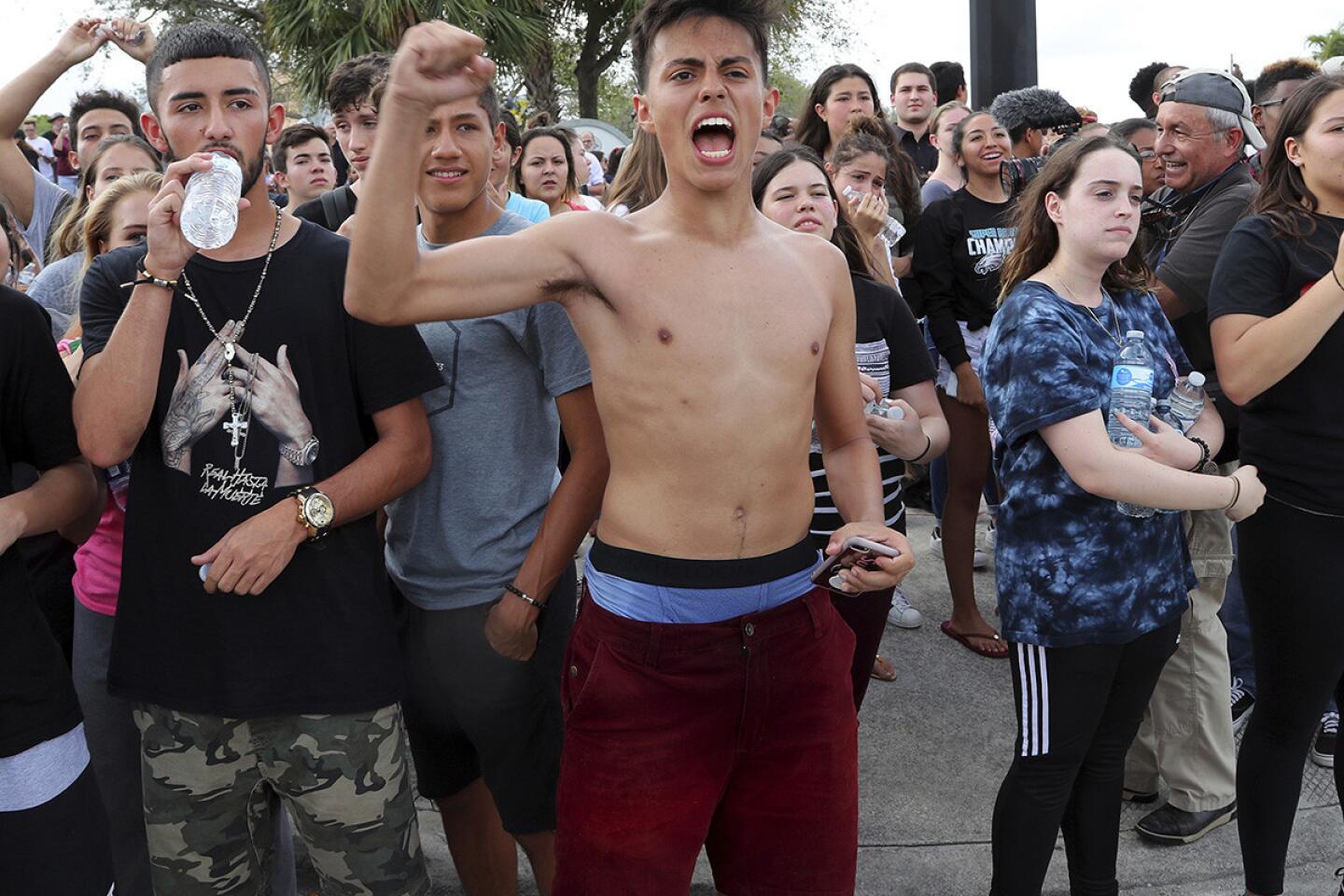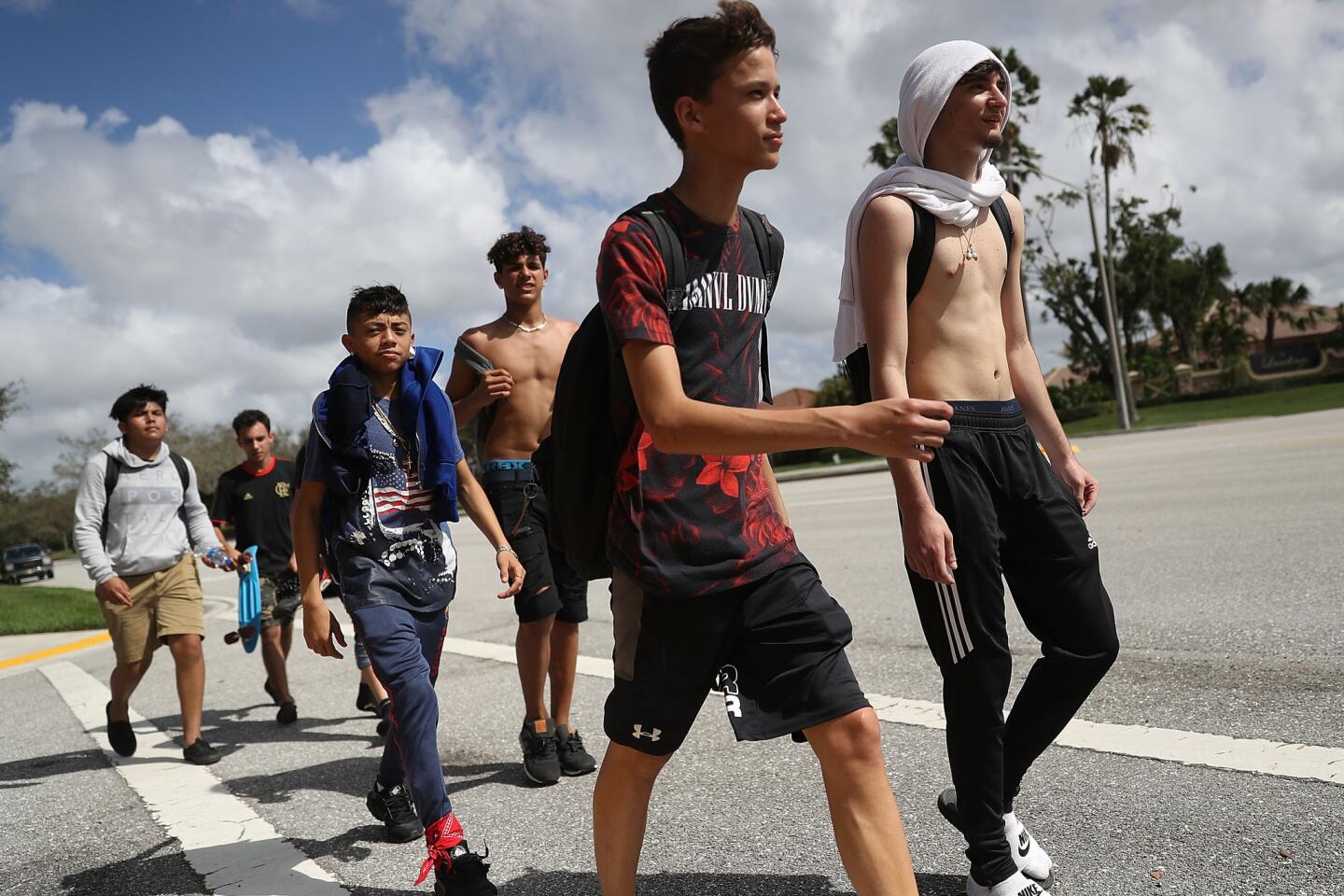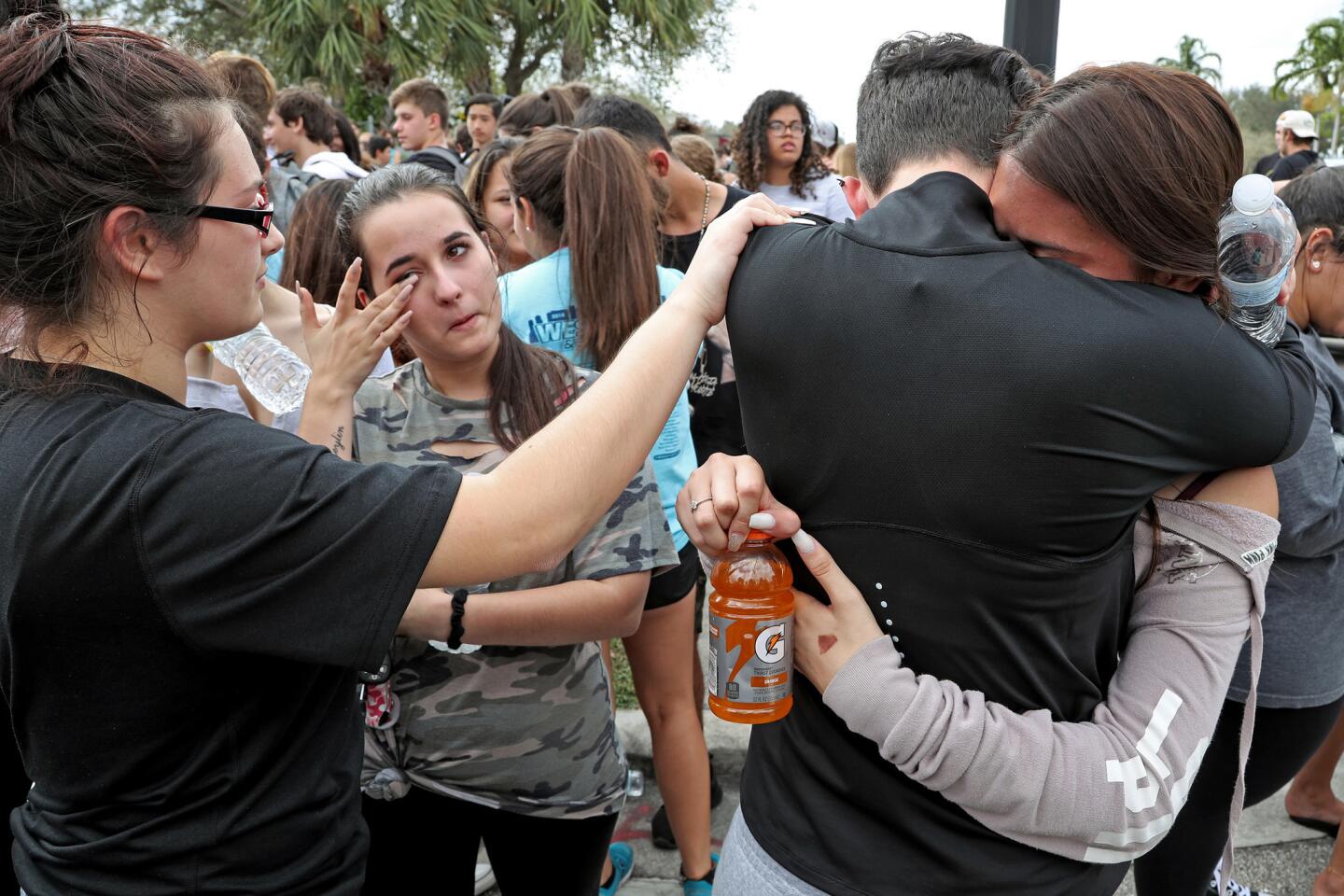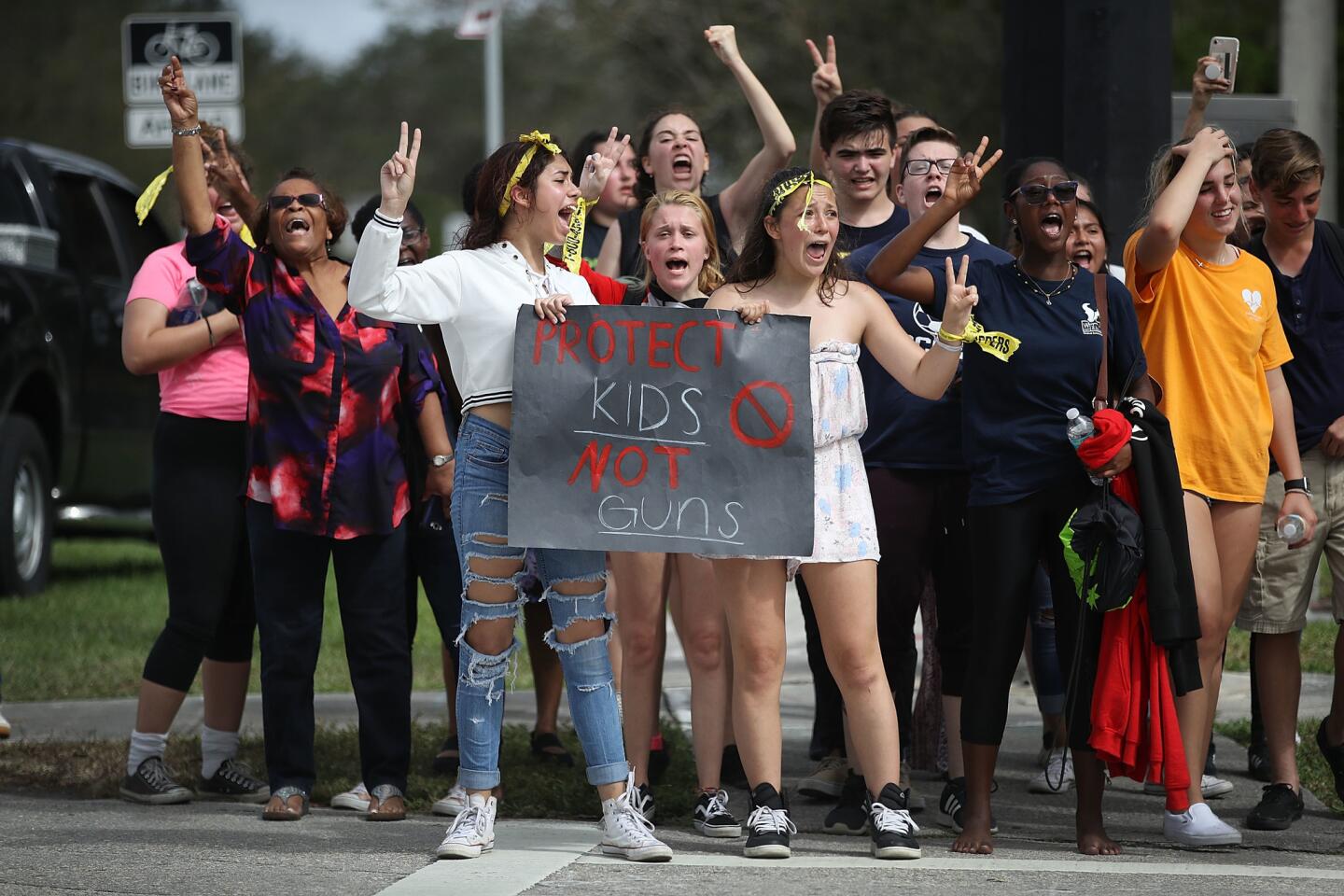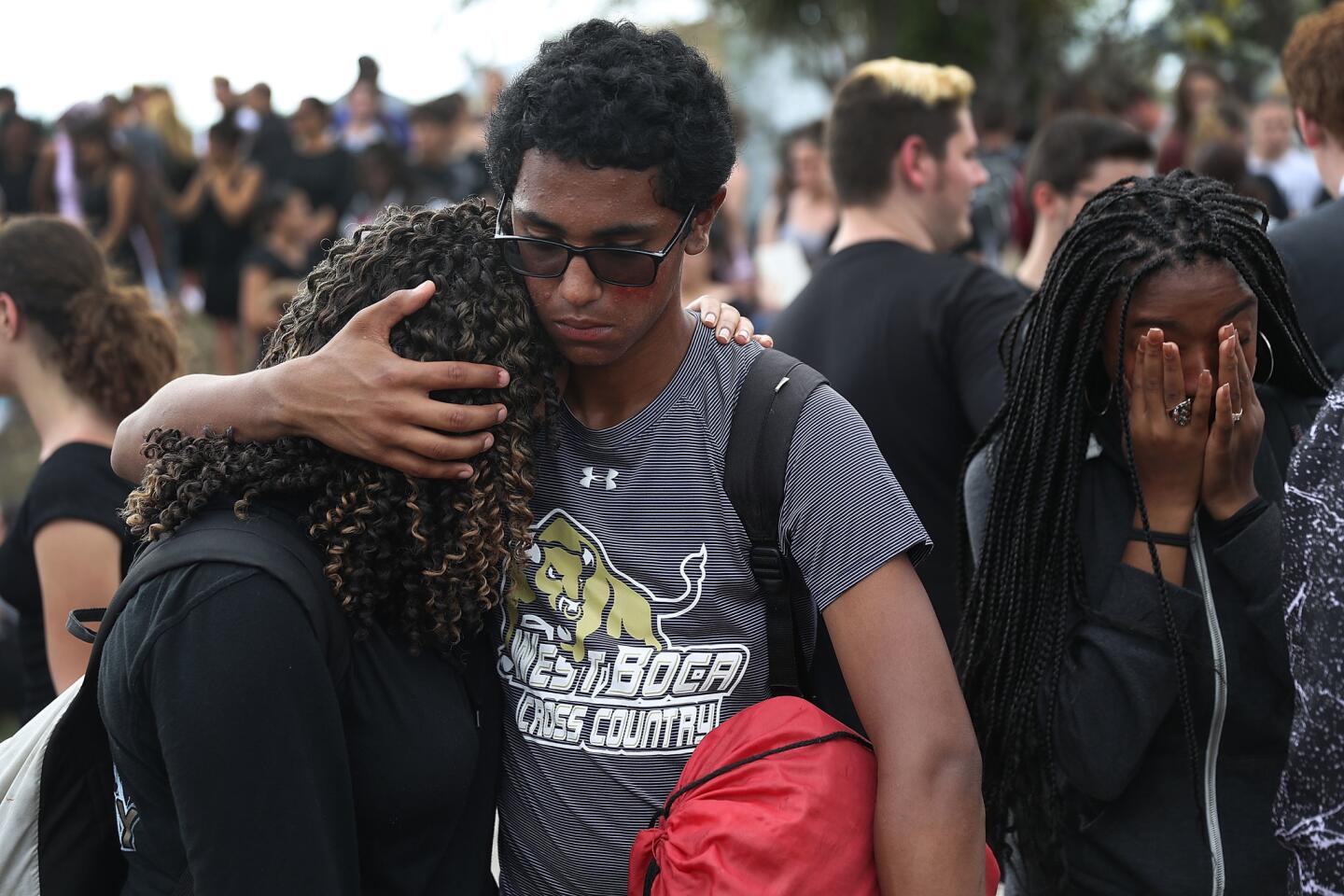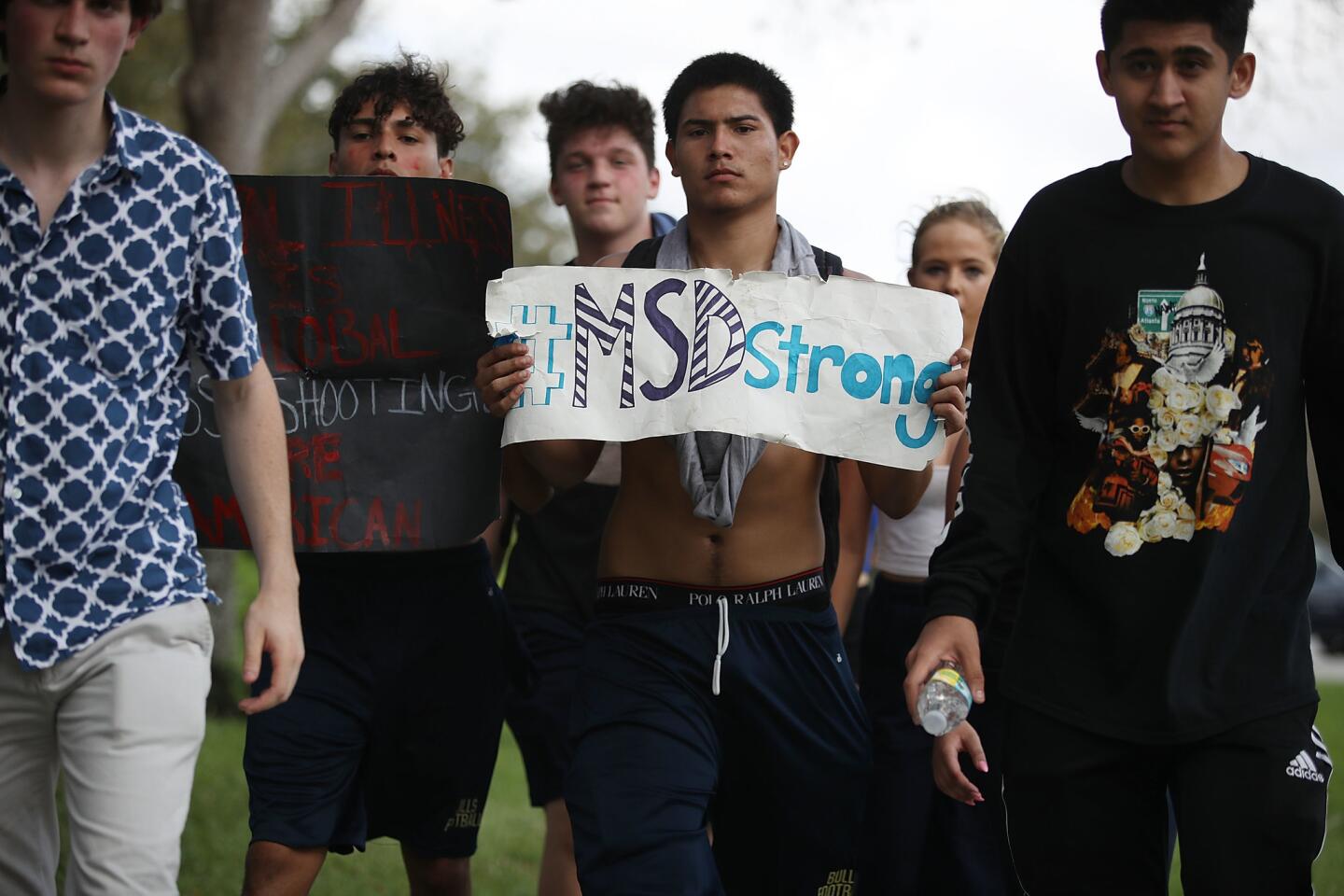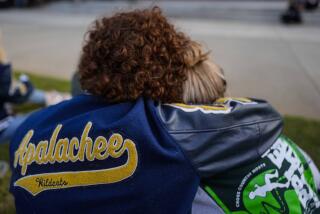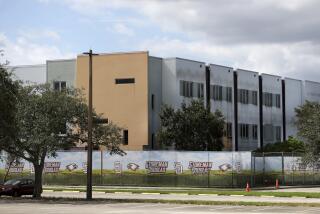A spreading movement? How Florida school shooting survivors are inspiring other students to demand gun control
It started as a memorial to the 17 dead.
But after students at West Boca Raton Community High School gathered outside Tuesday to mark 17 minutes of silence — one for each person shot to death last week at nearby Marjory Stoneman Douglas High School — it turned into a protest for gun control.
“If you cannot use guns the right way, there shouldn’t be guns at all,” one student yelled, drawing roars from the crowd of his classmates, who chanted, “We! Want! Change!”
Suddenly, a few students bolted to leave the campus, ignoring the commands by school staff to stay — and much of the student body followed, skipping classes to march to Stoneman Douglas in the city of Parkland . It was a 10-mile walk.
Across South Florida, an unusually passionate grass-roots gun control movement is taking hold among high school students, who are clamoring for bolder government action to prevent future mass shootings.
Following past mass shootings, politicians have often called for a quiet time of mourning in lieu of acrimonious political debates. Before long, each tragedy fades from the news until the next one.
But the students of Stoneman Douglas have made a conscious effort to break the pattern, organizing rallies and unleashing an outpouring of activism not often seen after similar tragedies.
They’ve struck a chord with the public, earning tens of thousands of followers on social media and frequent appearances on national television.
On Tuesday, a group traveled to the capital, Tallahassee, to press their case with state lawmakers.
They face an difficult battle. The same day, the Republican-controlled state House of Representatives voted against holding a debate over a bill to ban assault-style rifles, making it unlikely the Legislature will consider such a measure before its session ends March 9.
Nonetheless, the students’ advocacy is proving contagious. To understand how the messaging is catching on, look no further than West Boca Raton Community High School.
Victoria Vigil, 18, a senior at West Boca, had never protested before when she made an impromptu decision to walk out with other students Tuesday.
Every day since the massacre, she’s been talking about the shooting with her friends and classmates.
Vigil recently watched video of Stoneman Douglas shooting survivor Emma González making a passionate speech at a rally calling for tougher gun-control laws, lest the massacre become just another forgotten mass shooting.
“I started crying,” Vigil said. “She was right. Next week, two weeks later, everything’s going to go away. If politicians aren’t going to take action now, then we have to.”
The protest began as a gathering of students who had gotten permission from the principal to pay tribute to the shooting victims, said one of the organizers, Jack Schuster, a 17-year-old senior.
When other students saw a small sit-in was forming, “people started running over, literally sprinting just to get to us,” Schuster said. “A huge crowd formed.”
The 17-minute silence was emotionally intense, but once it was over, “I expected to just go to class,” said senior Shelby Pierre, 17. Instead, a circle formed. Students held up signs and began chanting, “No justice, no peace.”
That’s when the students began pouring into the roadway. When school staff tried to prevent the exodus, “no one listened,” Pierre said.
The school’s administrators did not respond to a message seeking comment. But the brazenness of the walkout matched the rhetoric that many students have used in recent days to express their outrage over the failures of adults to stop mass shootings.
“I feel like people are just sick and tired of being scared,” Pierre said, recalling how some of the student speakers at Tuesday’s gathering had friends who were killed last week. She credited the student activists at Stoneman Douglas for setting the tone and creating a model and an atmosphere of unity that has inspired other students to join their movement.
“A lot of people look down on teenagers and think we’re kids and can’t have thoughts,” Pierre said. “But these protests made me realize my peers notice what’s happening — they’re not ignorant. We’re all feeling the same thing. Seeing kids my age [at Stoneman Douglas] do that and get attention really makes me want to do more too.”
And now that she’s protested once, Pierre wants to protest again. “I just feel like some people might be scared to protest. It was real nerve-wracking,” Pierre said. “But once you do it, you feel liberated, and you feel like you’re connecting. All the people that you don’t know who’s hurting, you find out they’re hurting with you, and you’re just more connected through protesting.”
Antonia Olivares, a 16-year-old sophomore, had never protested before joining the unplanned walkout.
“I’ve never actually been part of something so spontaneous. It was from the heart. Everyone was so emotional,” Olivares said. “We knew this had to be bigger than 17 minutes of silence.”
Police began to follow the marchers, along with local television news helicopters, as the students chanted, “We want change!”
Drivers honked in support; some locals set out stands of food and water to help keep the student marchers nourished on their several-hour journey to Stoneman Douglas.
“At first, I did not know where we were going,” said Olivares, who was wearing flip-flops and quickly developed blisters.
Even when she learned the destination was 10 miles away, she decided there was no way she was going to stop walking.
“I can‘t just wait around for them to change the laws,” Olivares said of legislators. “I need to get out there and voice my opinion.”
Two hours into the march, her parents came by, not to pick her up, but to bring her her socks and some Sketchers sneakers.
Once students reached Stoneman Douglas, they celebrated their journey but also paid respects at the temporary memorials that had been placed outside the school, until their school district sent buses to pick them up and take them back.
To read this article in Spanish, click here
Matt Pearce is a national reporter for The Times. Follow him on Twitter at @mattdpearce.
UPDATES:
7:30 p.m.: This article was updated to include the Florida House vote against debating a bill to ban assault-style rifles.
This article was originally published at 7 p.m.
More to Read
Sign up for Essential California
The most important California stories and recommendations in your inbox every morning.
You may occasionally receive promotional content from the Los Angeles Times.
